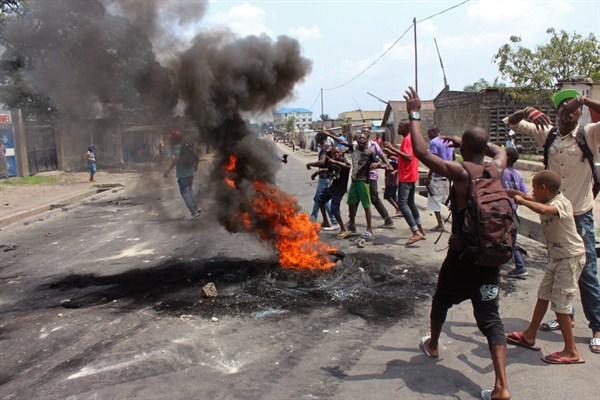Flying into Kinshasa, the capital of the Democratic Republic of Congo, in the early days of 2015, foreign diplomats could be excused for being disoriented. The news in the international press was focused on an impending offensive against Rwandan rebels in the east of the country, an area to which the United Nations peacekeeping mission––the largest in the world––had just relocated most of its troops and staff.
And yet, in the embassies and upscale restaurants of the capital, the buzz was all about political wrangling among elites ahead of elections still two years away. The populist governor of mining-rich Katanga had just given a fiery speech challenging President Joseph Kabila, who appears to be trying to illegally extend his presidential mandate. Several weeks later, police broke up widespread protests in Kinshasa with live bullets and tear gas as the population protested a controversial electoral law. The war in the distant and mountainous east seemed a faint murmur.
This disjuncture illustrates two key features of the Congolese conflict, now in its third decade, with close to 3 million people still displaced. First, the dynamics underlying the war have shifted over time as external antagonisms, which initially fueled the war, have receded, while national and local forces have become more important.

